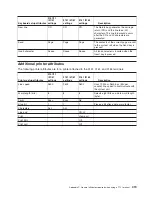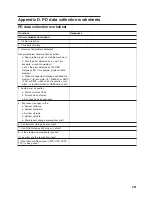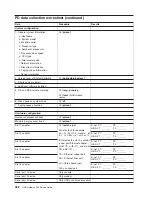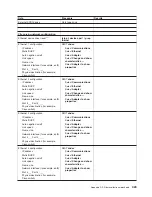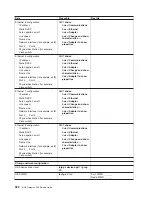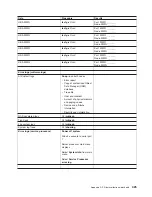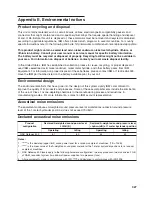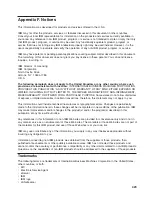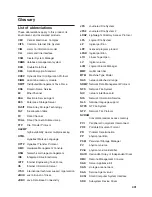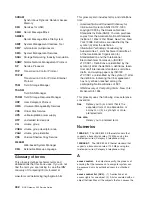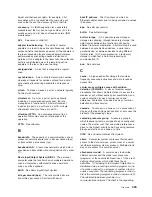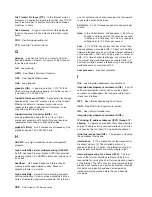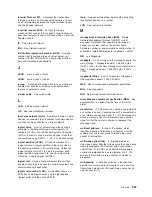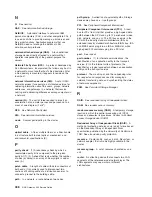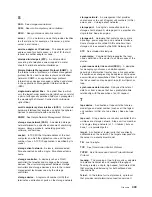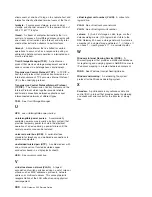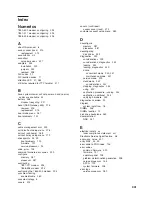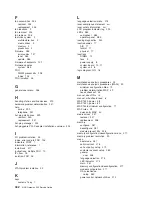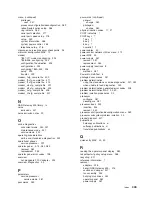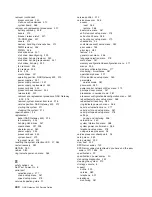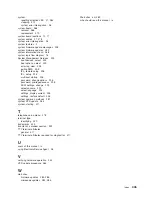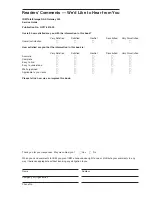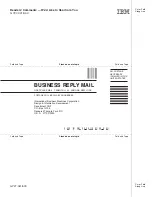
object and their access rights; for example, a list
associated with a file might identify users who can
access the file and their access rights to that file.
accessory.
An IBM designation for a separately
orderable part that (a) has no type number, (b) is for
purchase only, and (c) does not receive normal IBM
maintenance.
ACL.
See
access control list
.
adapter load balancing.
The ability of several
adapters in a team to be active simultaneously, with the
outbound-traffic load balanced across all the adapters in
the team; spreading tasks among adapters improves
performance by preventing uneven distribution of
workload. If one adapter in the team fails, the outbound
traffic is redistributed across the remaining active
adapters in the team. See also
teaming
.
assigned disk.
A disk that is mapped to a logical
drive.
asynchronous.
A class of data-transmission service
whereby all requests for service contend for a pool of
dynamically allocated ring bandwidth and response
time.
attach.
To make a device a part of a network logically.
Contrast with
connect
.
attachment.
A port or a pair of ports, optionally
including an associated optical bypass, that are
managed as a functional unit. A dual attachment
includes two ports: a port A and a port B. A single
attachment consists of one port: port S.
attention (ATTN).
An occurrence external to an
operation that could cause an interruption of the
operation.
ATTN.
See
attention
.
B
bandwidth.
The capacity of a communications line or
processor, normally expressed in bits per second (bps)
or transactions per seconds (tps).
baseband LAN.
A local area network in which data is
encoded and transmitted without modulation of a carrier
(T).
Basic Input/Output System (BIOS).
The personal
computer code that controls basic hardware operations,
such as interactions with diskette drives, hard disk
drives, and the keyboard.
BIOS.
See
Basic Input/Output System
.
bits per second (bps).
The rate at which bits are
transmitted per second. Contrast with
baud
.
boot IP address.
The IP address on which an
Ethernet adapter boots prior to being assigned a service
IP address.
bps.
See
bits per second.
buffer.
See
buffer storage
.
buffer storage.
(1) A special-purpose storage or
storage area allowing, through temporary storage, the
data transfer between two functional units having
different transfer characteristics. A buffer storage is used
between non-synchronized devices, a serial and a
parallel device, or between devices having different
transfer rates. (2) In word processing, a temporary
storage in which text is held for processing or
communication (T).
bus.
See
data bus
.
C
cache.
A high-speed buffer storage that contains
frequently accessed instructions and data to reduce
access time.
carrier sense multiple access with collision
detection (CSMA/CD).
A class of medium access
procedures that allows multiple stations to access the
medium at will, without explicit prior coordination, and
avoids contention by way of carrier sense and
deference. Contention is resolved by way of collision
detection and transmission.
cascade.
To connect in a series or in a succession of
stages so that each stage derives from or acts upon the
product of the preceding stage.
cascading resource group.
A resource group in
which takeover priority is assigned to each configured
node in the cluster such that ownership preferences is
given to the highest priority node. Cascading resource
groups exist only on one node at a time.
CIFS.
See
Common Internet File System.
client.
A computer system or process that requests
access to the data, services, or resources of a server
(another computer system or process). Multiple clients
may share access to a common server.
client-server model.
A common way to describe
network services and the model user processes
(programs) of those services. Need input. 1) We aren’t
defining
client/server
, which might have these
definitions:
1) Pertaining to the model of interaction in
distributed data processing in which a program at one
site sends a request to a program at another site and
awaits a response. The requesting program is called a
client; the answering program is called a server and 2)
The relationship between machines in a
communications network. The client is the requesting
Glossary
433
Summary of Contents for TotalStorage NAS Gateway 500
Page 1: ...IBM TotalStorage NAS Gateway 500 Service Guide GY27 0418 00 ...
Page 2: ......
Page 3: ...IBM TotalStorage NAS Gateway 500 Service Guide GY27 0418 00 ...
Page 16: ...xiv NAS Gateway 500 Service Guide ...
Page 20: ...xviii NAS Gateway 500 Service Guide ...
Page 36: ...System logic flow Note Not all components are supported 16 NAS Gateway 500 Service Guide ...
Page 52: ...32 NAS Gateway 500 Service Guide ...
Page 58: ...38 NAS Gateway 500 Service Guide ...
Page 112: ...92 NAS Gateway 500 Service Guide ...
Page 266: ...246 NAS Gateway 500 Service Guide ...
Page 326: ...306 NAS Gateway 500 Service Guide ...
Page 353: ...Chapter 11 Removal and replacement procedures 333 ...
Page 392: ...372 NAS Gateway 500 Service Guide ...
Page 402: ...382 NAS Gateway 500 Service Guide ...
Page 412: ...392 NAS Gateway 500 Service Guide ...
Page 440: ...420 NAS Gateway 500 Service Guide ...
Page 446: ...426 NAS Gateway 500 Service Guide ...
Page 448: ...428 NAS Gateway 500 Service Guide ...
Page 466: ...446 NAS Gateway 500 Service Guide ...
Page 469: ......
Page 470: ... Printed in U S A GY27 0418 00 ...
Page 471: ...Spine information IBM TotalStorage NAS Gateway 500 NAS Gateway 500 Service Guide GY27 0418 00 ...

